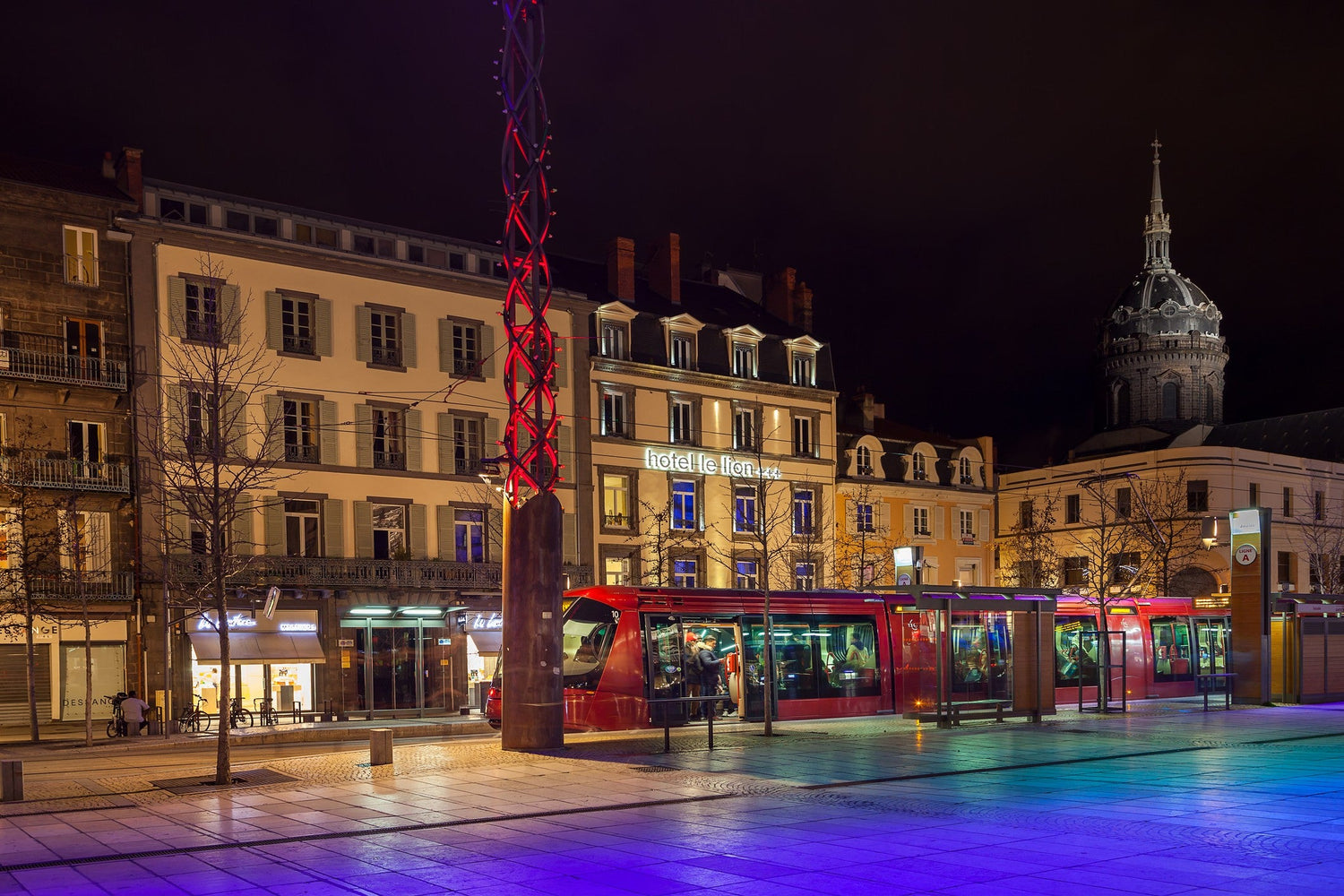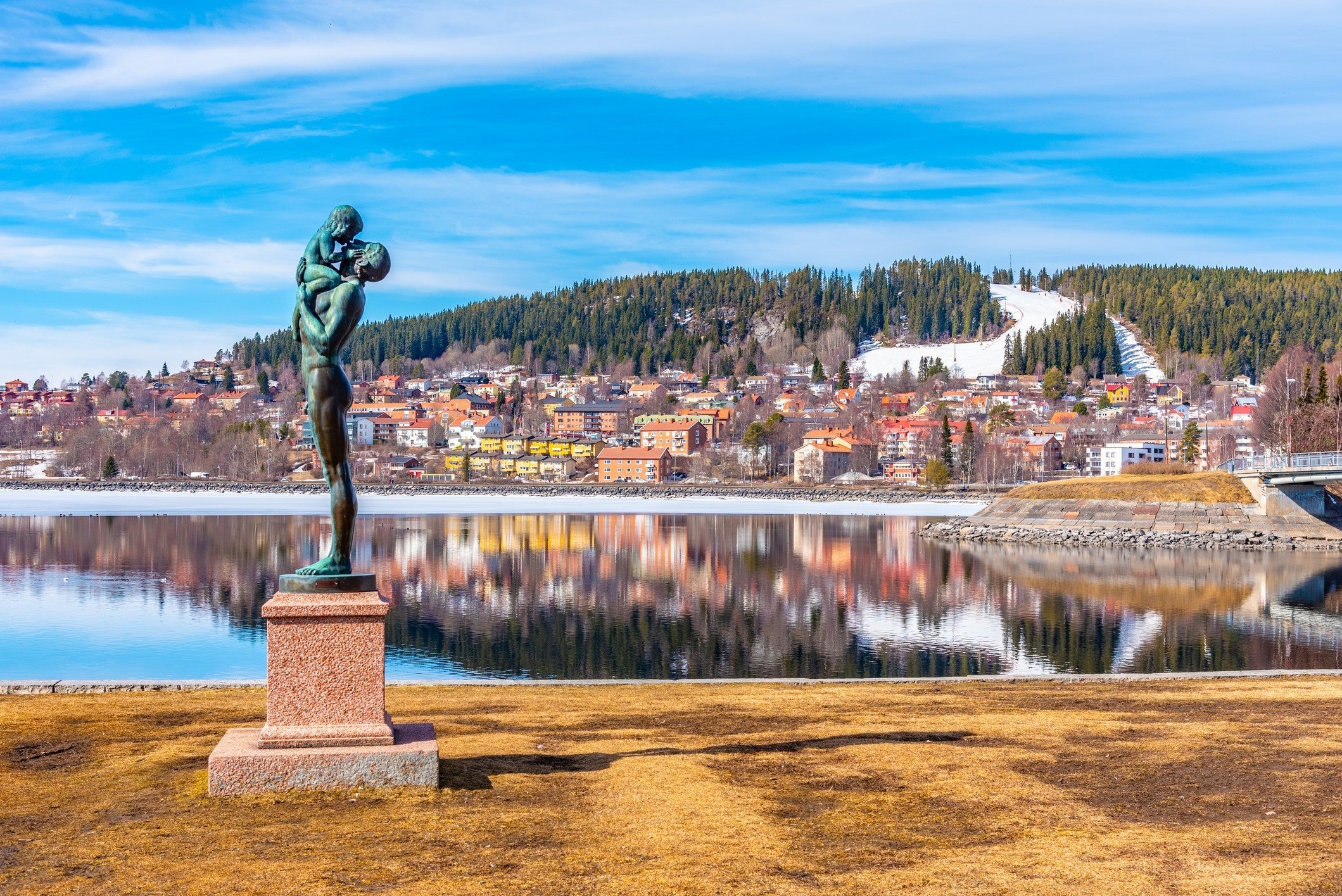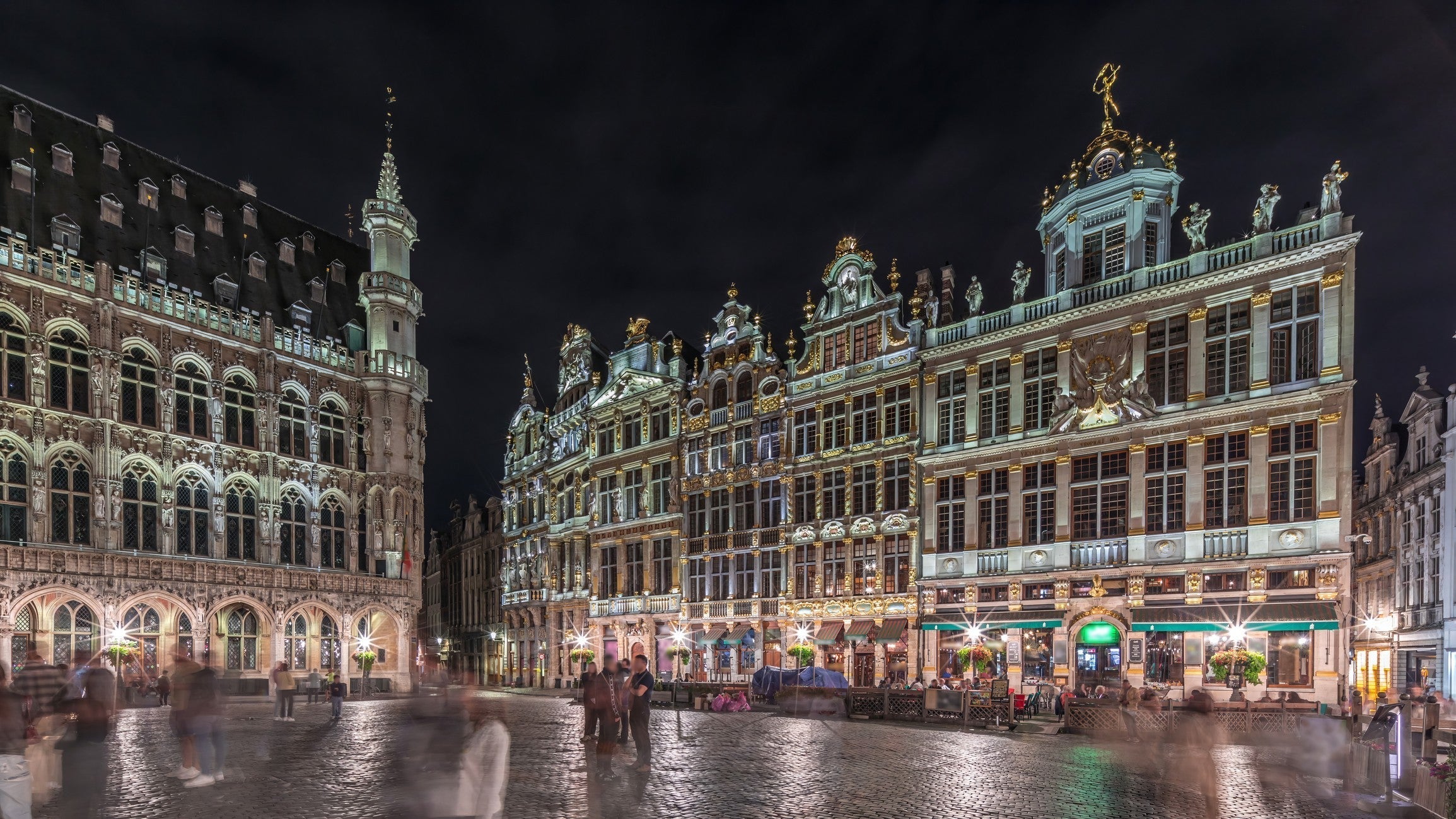Starting in Paris, we will be travelling to the beautiful Clermont Ferrand (Table 330) then onwards through one of Europe’s finest stretches of railway, to the vibrant city of Nimes (Table 333).
The journey begins in the heart of France’s capital at the unattractive Gare de Paris-Bercy, a relief station for the nearby Gare de Lyon. Unusually, the station features an area for loading cars and scooters onto trains used for overnight long distance services for passengers wishing to travel with their vehicle to destinations such as Avignon, Marseille, Nice, St Raphaël and Toulon. It is possible to complete the 723 km journey to Nimes on this route in around 9 hours, but with an abundance of fine scenery including mountains, gorges and rivers we recommend breaking your journey at some of the interesting towns along the way.
The two hour journey to the first stop, Nevers, follows one of the more interesting routes radiating out of Paris; it has indeed only been electrified since the mid-1990s. Weaving its way through forests, the line hugs the Loire river and affords lovely views over many of the regions vineyards. The picturesque town of Nevers (on a hill on the bank of the river) has a varied and interesting history and is renowned for its high quality porcelain which can be purchased in many shops around the town. There are several interesting buildings to explore in the town centre, of which the 15th-century Ducal Palace (now occupied by the courts of justice and a worthwhile ceramic museum) and the Cathedral of Saint-Cyr and Sainte-Julitte are the most important. Nevers is also internationally renowned as the burial place of Saint Bernadette - a 19th century saint famous for her visions which led her to demand a chapel be built near her hometown of Lordes. Thousands of pilgrims come each year to meditate before her body which is displayed at the Chapel of her name. The train then continues on through the pretty Bourgogne-Franche-Comté region stopping at the smaller towns of Moulins sur Allier and Saint-Germain-des-Fossés.
The next stop on this route is the town of Vichy in the Auvergne region, most famous for its historic spa facilities and for being the seat of government of France’s collaborationist regime in World War Two. The pedestrianised town centre offers no shortage of attractions. Architectural sights of interest include the art-nouveau Opera house, the casino and the Hall des Sources where you can sample the naturally fizzy healing waters.
After a brief stop at Riom - Châtel-Guyon, we continue to Clermont Ferrand where you have to change train. The capital of the Auvergne region has exceptional surroundings. Sitting among the Puys Mountain Range and its chain of volcanoes, it is the starting point for several scenic rail journeys. The city is overlooked by the imposing, dormant Puy de Dôme. Visitors can ascend the mountain via a rack railway, at the top there is a restaurant, paragliding, hiking and lovely views along the Parc des Volcans.
The city was originally two towns, Clermont and Montferrand, and still retains two distinct historic centres: Clermont contains the key historic sights and Montferrand is one of the best historically preserved towns in France. Take in the religious architecture and buildings built from elegant grey lava stone, such as the city’s most imposing landmark, the Cathédrale Notre-Dame-de-l'Assomption with its black spires visible from almost every part of the town. The global tyre company Michelin established their corporate headquarters here more than 100 years ago in the city. The history of the company is displayed in the modern Aventure Michelin museum, one of several interesting museums in the city.
From here we follow “La Ligne des Cévennes” to Nimes but there are other scenic long distance options across the Massif Central. “La Ligne des Causses” which is frequently plagued by rumours of closure, follows a 394 kilometer route across the top of the mountain plateaux through Neussargues to Béziers (Table 332) and there is more beautiful scenery on the Arvant - Aurillac – Figeac line (Tables 331/317)
Continuing our look at Tables 330 and 333, from Clermont Ferrand we now travel through the beautiful Auvergne region and the most scenic part of the route, through the Gorges de l'Allier.
The train pootles through the Romanesque towns of Issoire, Brioude and St Georges d’Aurac before we reach Langeac. Here you can choose to leave the modern SNCF train and board the older and slower Cévennes tourist train which runs on selected days throughout the summer months between the towns of Langogne and Langeac. The train follows the famous "Cevenol" railway track which was originally built to directly link Paris to Marseille. Following the meanders of the river, hugging the rock face, the train offers some unbeatable views of the gorges as it passes through its many tunnels and crosses several amazing bridges. The tourist train includes a running commentary and takes just over 2 hours 20 mins, compared to the SNCF train which covers the same distance in about 1 hour 40 minutes, so there is plenty of time to appreciate the scenery and take ample photographs. For tickets and timings see their website.
Travelling south, the line crosses some of the most impressive viaducts on French railways, such as the grand one at Chapeauroux, the near-semicircle of Chamborigaud Viaduct and Villefort, the highest stone viaduct in France. Along this spectacular stretch long sections of track are built on masonry ledges high above the River Allier with glorious views along the valley. The highest point of the journey is at La Bastide, where the line crosses the watershed between the Atlantic and the Mediterranean, from here the line drops down, passing mostly through tunnels towards our final stop, Nîmes.
Nîmes is one of the most attractive cities in France and is just the right size for exploring on foot. Established by the Romans, and often referred to as the ‘French Rome’ it retains some of the finest Roman remains in the Mediterranean, including its famous amphitheatre, one of the best-preserved in the world. Other Roman sites include the Maison Carrée (Square House), a small, wonderfully preserved Roman temple and the nearby Pont du Gard (approximately 20 kilometres north-east of the city), a very picturesque aqueduct built during the first century AD to supply water to the city.
Apart from its Roman remains, the city has an attractive old town to explore with quaint markets, a wealth of museums and beautiful gardens such as the Jardins de la Fontaine, one of the oldest city parks in France which contains further Roman remains.
Nîmes is also an ideal base for exploring further afield using regional rail connections, such as the Cevennes national park to the north or the renowned wetlands of the Camargue to the south. Its main railway station offers easy connections to the nearby cities of Montpellier, Avignon and Marseille from where you can connect to other scenic rail lines along the coast to the Cote d'Azur or north into Provence. In short hops, you can get to Avignon or Montpellier; perfect places to continue a rail exploration of France.



